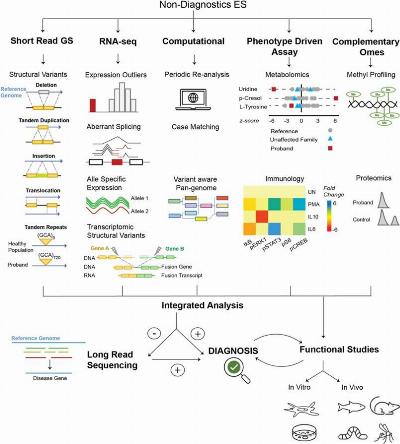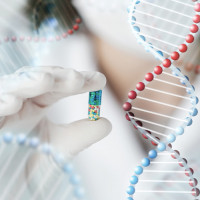Current Diagnostic Technologies for Rare Disease Research

Strong 8k brings an ultra-HD IPTV experience to your living room and your pocket.
Rare diseases are characterized by their low prevalence, affecting a small number of people across the world. These diseases often come with significant challenges, including accurate diagnosis, availability of effective treatments, and limited resources for research and development. However, recent advancements in diagnostics technology hold promise for speeding up the field of rare disease therapies.
Challenges of rare disease research
According to the Genetic and Rare Diseases Information Center, rare diseases are estimated to affect over 30 million people in the United States. Since individual rare diseases affect a small number of people, there is limited knowledge about their causes, diagnosis, treatment, and potential cure. This can lead to delayed or incorrect diagnosis, lack of effective treatments, and limited support or resources for patients and their families.
Due to their rarity, rare diseases often face challenges in research funding, clinical trials, and access to specialized healthcare services. Efforts are being made globally to raise awareness about rare diseases, improve diagnostics and therapies, and provide support to patients and families affected by these conditions.
Rare disease diagnosis can often be a complex and time-consuming process. Many rare diseases have symptoms that overlap with more common conditions, causing misdiagnosis or delayed diagnosis. Additionally, traditional diagnostics methods may not be suitable for these diseases, as they often require specialized tests that are not widely available.
In recent years, however, there has been a surge in the development of new diagnostic tools and technologies aimed specifically at rare diseases. These innovative approaches include genetic testing, next-generation sequencing, and biomarker analysis, which allows for more accurate and early detection of rare diseases by analyzing a patient's genetic makeup or identifying specific biomarkers in their blood or tissues.
Genetic testing is one such breakthrough in diagnostics that has revolutionized the field of rare diseases. By analyzing an individual's DNA, scientists can identify variations or mutations that are associated with certain rare disorders. This technology has enabled healthcare professionals to pinpoint the cause of rare diseases more accurately and tailor treatments specific to each patient's genetic makeup.
Next-generation sequencing (NGS) has further enhanced the diagnostic process. This technique allows for rapid and cost-effective sequencing of multiple genes simultaneously. With NGS, scientists can examine a large number of genes associated with various rare diseases, providing a comprehensive assessment of the patient's genetic profile, further boosting the chances of identifying a genetic abnormality that answers the diagnostic puzzle.
In addition to gene technology, biomarker analysis has also become a valuable tool in the fight against rare diseases. Biomarkers are measurable substances present in the body that can indicate the presence or progression of a particular disease. By analyzing these biomarkers in a patient's blood or tissue samples, researchers can gain valuable insights into the underlying pathology or detect the disease at an early stage.
The significant advantage of these innovative diagnostic approaches is their ability to detect rare diseases at an earlier stage, increasing the chances of successful intervention. With the continuous innovation in these technologies, diagnostic development is expected to accelerate rare disease therapy development worldwide.
Note: IndiBlogHub features both user-submitted and editorial content. We do not verify third-party contributions. Read our Disclaimer and Privacy Policyfor details.


